#Sustainability in Retail
Text
Changing Landscape of European Retail
Written By: Jagriti Shahi

Figure: Growth of retail in Europe
The retail industry in Europe has undergone significant transformations in recent years, driven by changing consumer preferences, technological advancements, and global economic shifts. From traditional brick-and-mortar stores to e-commerce giants, European retail has seen a remarkable evolution. In this article, we will explore the key trends shaping the changing landscape of European retail and how businesses are adapting to stay competitive in this dynamic environment. The retail sector in Europe is the largest in the world, with a turnover of over €2 trillion in 2021. The sector employs over 20 million people and accounts for about 10% of the EU's GDP. The retail sector in Europe is highly fragmented, with a large number of small and medium-sized enterprises (SMEs). However, there are also a number of large multinational retailers operating in the market, such as Carrefour, Tesco, and IKEA.

Figure: Growth of retail in Europe
The retail sector in Europe is facing a number of challenges, including the rise of e-commerce, the changing demographics of consumers, and the increasing adoption of new technologies. The rise of e-commerce is one of the most significant challenges facing the retail sector in Europe. In 2021, online retail sales in Europe reached €768 billion, accounting for 16.1% of total retail sales. This growth is being driven by a number of factors, including the increasing availability of high-speed internet, the growing popularity of mobile shopping, and the convenience of online shopping.
Traditional brick-and-mortar retailers are struggling to compete with the convenience and lower prices of online retailers. In order to survive, traditional retailers are investing in their online presence and offering omnichannel experiences that allow customers to shop online and in-store. The demographics of European consumers are also changing, which is having an impact on the retail landscape. The population is aging, with more people over the age of 65. This group is increasingly active and affluent, and they are looking for different products and services than younger consumers. They are also more likely to shop online.
Another demographic trend is the increasing diversity of the European population. This is leading to a demand for more ethnic food and clothing stores. Retailers are also adapting their marketing and advertising to reach these new customer groups.
New technologies are also having a major impact on the retail landscape. The use of artificial intelligence (AI), augmented reality (AR), and virtual reality (VR) is growing, and these technologies are being used to improve the customer experience in a number of ways. For example, AI can be used to personalize recommendations, AR can be used to try on clothes virtually, and VR can be used to create immersive shopping experiences. The adoption of new technologies is also creating new opportunities for retailers. For example, retailers can use data analytics to track customer behavior and improve their marketing and product offerings. They can also use social media to connect with customers and build relationships.
The future of European retail is uncertain, but it is clear that the industry is undergoing a major transformation. The rise of e-commerce, the changing demographics of consumers, and the increasing adoption of new technologies are all having a major impact on the way people shop. Retailers that are able to adapt to these changes will be the ones that are successful in the future.
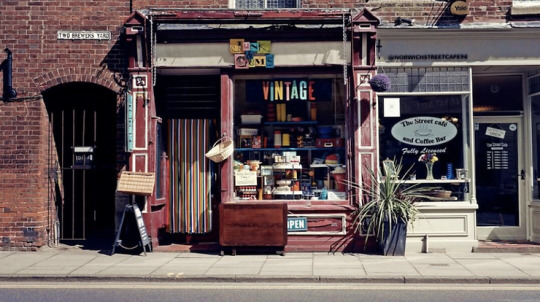
Figure: Brick-and-Mortar stores
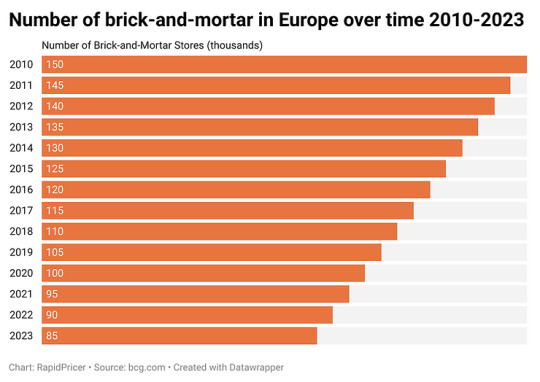
Figure: Number of brick-and-mortar in Europe over time

Figure: Department stores
Department stores: Department stores are large stores that sell a variety of products, such as clothing, home goods, and electronics. Some of the most famous department stores in Europe include Galeries Lafayette in Paris, Selfridges in London, and El Corte Inglés in Madrid.
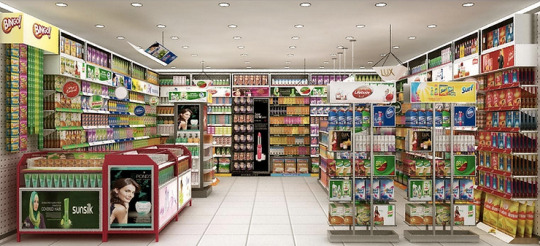
Figure: Independent retailers
Independent retailers: Independent retailers are small, privately owned businesses that sell a variety of products. These retailers often have a strong local presence and offer a unique shopping experience.
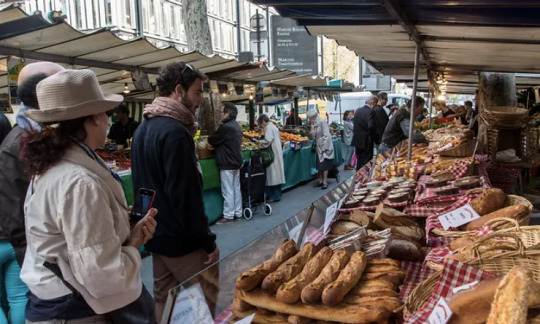
Figure: Markets
Markets: Markets are a great place to find fresh produce, meats, cheeses, and other local products. Many European cities have traditional markets that have been operating for centuries.

Figure: Outlet
Outlet malls: Outlet malls are a great place to find discounted name-brand clothing, shoes, and accessories. These malls are often located in tourist destinations.
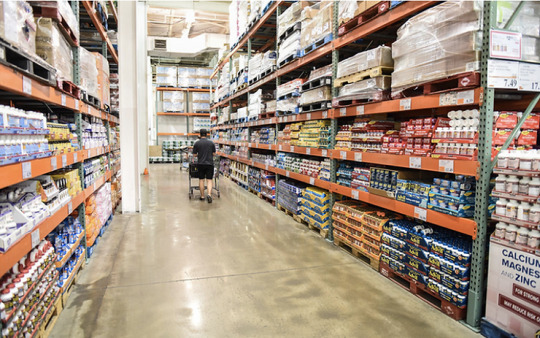
Figure: Warehouse clubs
Warehouse clubs: Warehouse clubs are membership-only stores that sell a variety of products in bulk. These clubs are a great place to find discounts on groceries, household goods, and other items.
Traditional retail is still a major part of the retail landscape in Europe, and it is likely to remain so for the foreseeable future. These stores offer a unique shopping experience that cannot be replicated online. In addition, many traditional retailers are adapting to the changing retail landscape by investing in their online presence and offering omnichannel shopping experiences.
The European Retail Landscape
Europe boasts a diverse and rich retail heritage, with traditional shops, boutiques, and markets dating back centuries. These establishments have played a significant role in local economies, offering consumers a wide range of goods and personalized shopping experiences.
Challenges in the Digital Age: Traditional retail in Europe has felt the impact of the digital age. The rapid growth of e-commerce giants like Amazon, along with the convenience of online shopping, has led to a decline in foot traffic at brick-and-mortar stores. Consumers now have access to a vast array of products with the click of a button, making it essential for traditional retailers to adapt.
The Omnichannel Approach: Many traditional European retailers are responding to the digital challenge by adopting an omnichannel approach. This strategy combines physical stores with an online presence, offering consumers a seamless shopping experience. Retailers are investing in e-commerce websites, mobile apps, and in-store technology to bridge the gap between offline and online shopping.
Customer Experience and Personalization: One advantage traditional retailers have over e-commerce is the ability to provide a unique and personalized customer experience. Many European consumers still value the tactile, sensory experience of shopping in a physical store. Traditional retailers are focusing on creating welcoming and interactive environments, offering personalized service, and curating their product selections to cater to local tastes.
Sustainability and Localism: In response to consumer demand for sustainability and ethical shopping, traditional European retailers are emphasizing their commitment to local sourcing and environmentally friendly practices. Some are rediscovering the benefits of locally-produced goods, promoting them as eco-friendly alternatives to mass-produced items. This aligns with the rising trend of supporting local businesses and reducing the carbon footprint associated with global supply chains.
Cultural and Historical Significance: Traditional retail establishments often hold cultural and historical significance in European communities. Many have been in operation for generations, serving as cornerstones of local culture. These stores are cherished by residents and tourists alike, and efforts are made to preserve their historical authenticity while integrating modern retail practices.
Government Support: Some European governments recognize the importance of preserving traditional retail and are offering support through grants, subsidies, and regulatory measures. These initiatives aim to bolster traditional retail against the encroachment of e-commerce and maintain the vibrancy of city centers.
Conclusion
Traditional retail in Europe is at a crossroads. While it faces challenges from the digital age and changing consumer preferences, it also has unique advantages rooted in history, culture, and personalized shopping experiences. To thrive in today's retail landscape, traditional retailers must embrace technology, adopt an omnichannel approach, focus on customer experience, and align with sustainability and localism trends. In doing so, traditional European retail can not only survive but also continue to offer consumers a distinctive and cherished shopping experience that reflects the rich tapestry of Europe's retail heritage. By adapting to the evolving market while preserving their unique qualities, traditional retailers can continue to play a vital role in the continent's commercial landscape.
The changing demographics of consumers
The demographics of European consumers are also changing, which is having an impact on the retail landscape. The population is aging, with more people over the age of 65. This group is increasingly active and affluent, and they are looking for different products and services than younger consumers. They are also more likely to shop online.
Another demographic trend is the increasing diversity of the European population. This is leading to a demand for more ethnic food and clothing stores. Retailers are also adapting their marketing and advertising to reach these new customer groups.
Here are some specific examples of how the changing demographics of consumers are impacting the retail industry in Europe:
The aging population is leading to a demand for more accessible and convenient shopping options. This is driving the growth of online grocery delivery and click-and-collect services.
The increasing diversity of the population is leading to a demand for more ethnic food and clothing stores. This is also leading to a demand for products and services that cater to the needs of diverse cultures, such as halal food and bilingual customer service.
The rise of the digital native is leading to a demand for more personalized and engaging shopping experiences. This is driving the growth of mobile commerce and augmented reality (AR) shopping.
The changing role of women is leading to a demand for more flexible shopping hours and options for online shopping. This is also leading to a demand for more products and services that are designed for women, such as maternity clothing and baby products.
The growing importance of sustainability is leading to a demand for more sustainable products and services. This is driving the growth of organic food, fair trade clothing, and recycled packaging.
The increasing adoption of new technologies
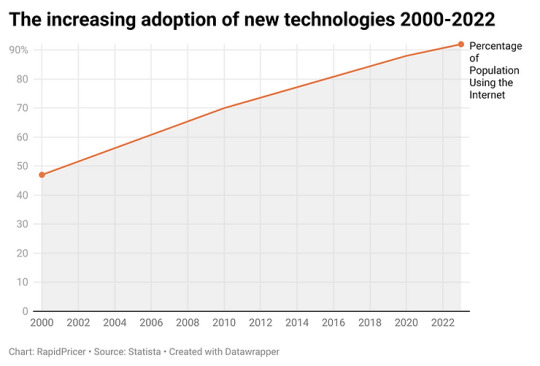
Figure: The increasing adoption of new technologies
As you can see, the percentage of people in Europe using the internet has been increasing steadily over the past two decades. This is due to a number of factors, including the increasing availability of high-speed internet, the falling cost of computers and smartphones, and the growing popularity of online services.
The increasing adoption of new technologies is having a major impact on the retail industry in Europe. Here are some of the key technologies that are being adopted by retailers in Europe:
Artificial intelligence (AI): AI is being used to improve a variety of tasks in the retail industry, such as customer service, inventory management, and fraud detection. For example, AI can be used to analyze customer data to personalize recommendations, or to predict which products are likely to be in high demand.
Augmented reality (AR): AR is being used to create immersive shopping experiences that allow customers to try on clothes virtually or see how furniture would look in their home. For example, IKEA has an AR app that allows customers to see how its furniture would look in their living room.
Virtual reality (VR): VR is being used to create even more immersive shopping experiences that allow customers to virtually visit stores and try on products. For example, Amazon has a VR store that allows customers to browse its products and make purchases.
Internet of Things (IoT): IoT is being used to connect devices and collect data about customer behavior. This data can be used to improve a variety of tasks, such as inventory management and customer service. For example, retailers can use IoT sensors to track the movement of products in stores and to identify when products are running low.
Blockchain: Blockchain is being used to create secure and transparent supply chains. This can help retailers to ensure the authenticity of their products and to track their products from the source to the customer. For example, Walmart is using blockchain to track the supply chain of its food products.
These are just some of the key technologies that are being adopted by retailers in Europe. The adoption of these technologies is helping retailers to improve their efficiency, personalize the customer experience, and create a more sustainable supply chain.
E-Commerce Dominance
One of the most profound shifts in European retail has been the rise of e-commerce. Consumers now have the convenience of shopping online from the comfort of their homes, and this trend has been accelerated by the COVID-19 pandemic. Major players like Amazon, Alibaba, and local champions such as Zalando and ASOS have expanded their reach across Europe, reshaping consumer behavior and expectations. Retailers have had to invest heavily in their online presence, enhancing websites, mobile apps, and supply chain logistics to meet the demand for digital shopping. Additionally, omnichannel strategies have become essential, allowing consumers to seamlessly switch between online and offline shopping experiences.
E-commerce dominance refers to the growing market share of online retailers over traditional brick-and-mortar stores. This trend is being driven by a number of factors, including the increasing availability of high-speed internet, the growing popularity of mobile shopping, and the convenience of online shopping. In Europe, e-commerce sales are expected to reach €768 billion in 2022, accounting for 16.1% of total retail sales. This growth is being driven by the increasing adoption of online shopping by consumers across all demographics.
There are a number of reasons why e-commerce is becoming so dominant. First, the availability of high-speed internet has made it possible for consumers to shop online quickly and easily. Second, the popularity of mobile shopping has made it possible for consumers to shop online from anywhere. Third, the convenience of online shopping is unmatched by traditional brick-and-mortar stores. Consumers can shop online 24/7, compare prices from different retailers, and have products delivered to their door. The rise of e-commerce is having a major impact on the retail industry. Traditional brick-and-mortar stores are facing increasing competition from online retailers, and many are struggling to compete. In order to survive, traditional retailers need to adapt to the changing retail landscape by investing in their online presence and offering omnichannel shopping experiences.

Figure: Share of online retail sales in Europe over time
As you can see, the share of online retail sales in Europe has been increasing steadily in recent years. This is due to the increasing popularity of online shopping, which is more convenient and offers a wider selection of products. The share of online retail sales is expected to continue to increase in the coming years. However, it is important to note that not all countries are affected equally. For example, the share of online retail sales is higher in Northern Europe than in Southern Europe. The future of online retail in Europe is bright. The growth of online shopping is being driven by a number of factors, including the increasing availability of high-speed internet, the growing popularity of smartphones and tablets, and the increasing convenience of online shopping.
Sustainability and Ethical Consumption
The European retail landscape is witnessing a significant shift towards sustainability and ethical consumption. Consumers are becoming increasingly aware of the environmental and social impact of their purchases. Retailers are responding by adopting eco-friendly practices, sourcing sustainable products, and promoting transparency in their supply chains.
Fashion brands, in particular, have made strides in sustainable fashion, with initiatives like "slow fashion" and clothing rental services gaining popularity. European consumers are favoring products that are produced responsibly and have a lower environmental footprint, and retailers are aligning their strategies with these values.
Personalization and Data Analytics
Data analytics and artificial intelligence are playing a crucial role in the transformation of European retail. Retailers are harnessing the power of big data to gain insights into consumer behavior, preferences, and shopping habits. This data-driven approach allows them to personalize marketing efforts, optimize inventory management, and enhance the overall shopping experience.
Personalized recommendations, targeted advertising, and tailored promotions are becoming the norm in the industry. Retailers are using predictive analytics to forecast trends and adjust their product offerings accordingly, ensuring they stay ahead of consumer demands.
Pop-Up Stores and Experiential Retail
While online shopping continues to grow, physical stores are not becoming obsolete. Instead, retailers are reimagining the in-store experience to attract and engage customers. Pop-up stores and experiential retail spaces are gaining popularity, offering unique and immersive experiences that cannot be replicated online.
These temporary stores allow retailers to test new products and connect with customers on a more personal level. They often incorporate interactive elements, such as virtual reality experiences or live demonstrations, to create memorable moments for shoppers.
Cross-Border Expansion
European retailers are increasingly looking beyond their home markets for growth opportunities. Cross-border expansion has become a viable strategy for many companies seeking to tap into new customer bases and diversify revenue streams. The European Union's single market has facilitated this expansion by reducing trade barriers and harmonizing regulations.
Furthermore, technology has made it easier for retailers to reach international customers through e-commerce platforms and digital marketing. As a result, many European brands are expanding their presence into neighboring countries and even outside of Europe, creating a more competitive and globalized retail landscape.
Post COVID European Retail
The retail industry in Europe is undergoing a period of change after COVID. The pandemic has accelerated the shift to online shopping, and brick-and-mortar stores are struggling to compete. Retailers are responding by adopting new technologies, such as AR and VR, and by offering more convenient shopping experiences, such as BOPIS. The industry is also focusing on sustainability, as consumers are increasingly demanding sustainable products and services.
Conclusion
The changing landscape of European retail is characterized by the rapid growth of e-commerce, a focus on sustainability and ethical consumption, data-driven personalization, experiential in-store experiences, and cross-border expansion. Retailers that adapt to these trends and embrace digital transformation are likely to thrive in this dynamic environment.
The future of European retail will continue to be shaped by evolving consumer preferences and technological innovations. To stay relevant, retailers must remain agile, customer-centric, and committed to ethical and sustainable practices. As the industry continues to evolve, it will be exciting to see how retailers innovate and compete in this ever-changing landscape.
About RapidPricer
RapidPricer helps automate pricing, promotions and assortment for retailers. The company has capabilities in retail pricing, artificial intelligence and deep learning to compute merchandising actions for real-time execution in a retail environment.
Contact info:
Website: https://www.rapidpricer.com/
LinkedIn: https://www.linkedin.com/company/rapidpricer/
Email: [email protected]
#European Retail Industry#Retail Trends in Europe#E-commerce Growth#Brick-and-Mortar Stores#Omnichannel Retailing#Digital Transformation#Consumer Behavior#Sustainability in Retail#Retail Technology#Online Marketplaces#Supply Chain Disruptions#Post-Pandemic Retail#Retail Innovation#Mobile Shopping#Data Analytics in Retail#Cross-Border Shopping#Pop-Up Stores#Customer Experience#Retail Competition#Retailer Partnerships#Retail Regulations#Future of Retail in Europe#Retail Challenges#Local vs. Global Retailers#Retail Adaptation Strategies
0 notes
Text










Angsila Oyster Scaffolding Pavilion, Chonburi, Thailand,
Chat Architects
#art#design#architecture#travels#bamboo#nature#seafood#foodong#restaurant#oyster#scaffolding#pavilion#chat architecture#eco-tourism#angsila#sustainability#sustainable architecture#retail#sea#thailand#chonburi#aquatic life#fisheries#angsila oyster scaffolding pavilion
228 notes
·
View notes
Text
Bandai Namco US Announces Amazon Exclusive Sustainable Tamagotchi Original Made From Real Egg Shells

This awesome shell is coming to the United States! Bandai Namco US has just announced that the sustainable Tamagotchi Original shell made from real egg shells, and packaged in a box made of recycled materials is headed to the United States. Exclusively sold on Amazon US for $29.99 with a release date of February 5th, 2024!
#tamapalace#tamagotchi#tmgc#tamagotchioriginalt#tamagotchi original#original#tamatag#virtualpet#bandai#sustainability#sustainable#eggshells#us#retailers#amazon
31 notes
·
View notes
Text
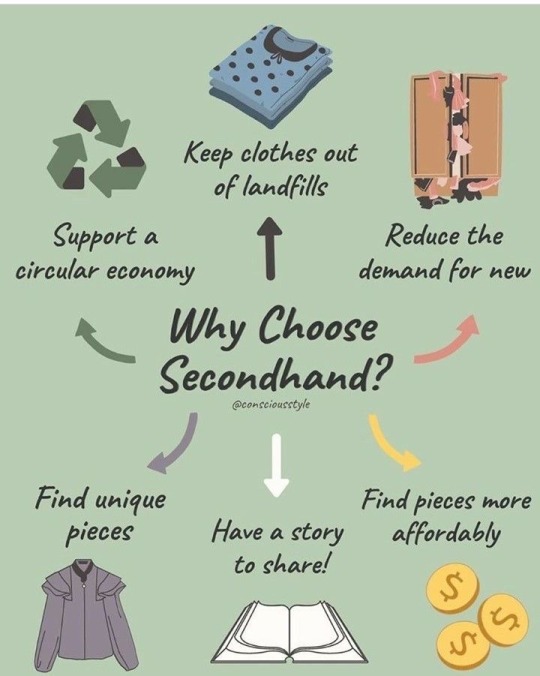
#thrifting#thrift store#thrift shop#shopping#retail therapy#consumerism#sustainability#earth#mother earth#mother nature#community#pagan#healing#nature#self care#fashion#fashion haul#clothing#photos#not mine
132 notes
·
View notes
Text
im convinced that people who actually want to live in cities and dont see the environmental and emotional trauma their inflicting on themselves by enabling those places to continue to grow have just the most severe brain damage
#saw a post that made me mad talking about slow living being Bad (in ways im not gonna write in tags and end up in thos spaces by accident)#but like......dropping a hut on a vacant lot and growing some veg and chickens is not nearly as#detrimental or colonizing as sprawling cities#also like who the fuck WANTS to live in a concrete jungle when trees and grass exist#yall are fucking sickos to lump wanting to be educated on herbal medicine and growing food and SPACE AWAY FROM LOUD NEIGHBORS#in with like trd wife and trf bullshit#cottagecore on twitter houses those type but like.....you know farms exist outside of northamerica too right#and some of us are better equipped for famr labour than retail?#i see more people complain about cottagecore as an aesthetic than is actually has issues tbh#but maybe i just mind my own business and actually know what living on a farm entails#my body gave out on me but i literally used to work on a horse farm#i know how much work chickens are#anyway people really will complain about anything and fail to realize that their own lifestyle is a much bigger problem than some strawman#they created in their heads just because they saw one tradwife on instagram living on a homestead with her 8 children and cheating husband#sorry i dont want to contribute to mental illnesses and pollution by living in the city??#farm whether hobby or just partially self sustaining doesnt equal root of all evil#some of us are just better equipt to tend to the sheep in the scottish highlands were our ancestors started#and besides id rather see semi delusional tradwives stsrting homesteads than all that same 'vacant' land go to more housing developments#anyway tho#all this because some bad faith take someone had because someone had the audacity to talk about their experiences with transmisogyny#(which i still think is a dumb concept cause called a spade a spade its transphobia) and wasnt a transfemme#im begging yall to stop talking over transmasc and afab people#youre not more important because you identify as a woman stop giving yourselves victim complexes and shutting down important conversations
3 notes
·
View notes
Text
I got my new car today!!! I haven’t actually driven it yet. Because new things are scary for me and it takes me a little while to get used to something like driving a new car, I wanted to drive it around my parents’ a little before going in a busy road. Rob said it has “responsive break” and i wanna get that “feel” down before I’m in heavy traffic. I like it though and am very grateful and excited!!
Being at my parents’ hasn’t been too triggering this time around. Usually there are some kind of comments about my body or what I’m eating, but we have such a short turn around this year that thankfully it hasn’t been too bad…
Did have to listen to my mom talk about this guy who has multiple myeloma (my mom has a precursor to MM) and apparently is in “full remission” using an antiviral but it came back because he got the covid vaccine…. Tried to explain why that’s probably not true actually but you know… I think she just desperately wants there to be simple/easier answers to the cancer she might develop, which I get, but I also feel like this is how misinformation takes roots.
(We don’t have a perfect system here in the US by far, but we aren’t lagging behind in the cancer treatment realm…. If antivirals worked to cure MM, there would be research on it… and people would do it… contrary to popular belief, Big Pharma isn’t pushing ineffective expensive drugs to steal your money and keep you sick…drugs are ridiculously expensive, but it’s not malicious… insurance companies are far more malicious for refusing coverage than the pharma companies imo)
Also listening to some people talk about pot shop workers (specifically managerial roles) not deserving to be paid a certain amount, all the gender critical bs, like yall, I don’t like government regulations in general and I have my views on how we attempt legislating morality and why it doesn’t work, but like…… when you use that argument to justify why people who “don’t have any education and just know drugs” (not a real quote just a paraphase) don’t deserve to be paid a certain amount, AND you don’t use it to say that like, gov shouldn’t restrict access to health care like abortions and gender affirming care… that’s not “government shouldn’t legislate morality,” that’s “government should legislate the morality I agree with” which is… the same thing you’re complaining about the “other side” doing.
Especially the gender stuff. It takes very little actual energy to use somebody’s preferred, correct pronouns. Affirming care literally saves lives. When you spend a lot of energy and time lobbying against these things, it really just tells me how uncomfortable you are with the idea that somebody could have a different life experience than you. The only person who should be spending that much time and energy caring about those things… should be the person themselves. Partners or family ofc should care too, but in a “how do we support this person so they can live a fulfilling life” way, not in a “i can’t handle anybody having a different lived experience than me” kind of way.
And also if you’re gonna complain about federal spending and budgets, can you at least acknowledge the ridiculous defense budget? Even if your viewpoint is “I don’t know how we can realistically and safely scale that back,” just like… recognize how little the government actually spends on programs like VA health care in relation to the massive defense budget. We rank third in the world for per capita military spending… I’m not saying you need answers on how to solve anything, but if you’re gonna criticize the drops in the bucket, acknowledging that they are in fact drops in the bucket comparatively would be nice.
#political bs sorry#I’m grateful for my parents in so many ways#but it would be great if they could acknowledge their own biases#and also look at the actual data#like no you don’t care about the trans persons health#because if you did you’d realize that gender affirming care and BEING A KIND HUMAN is the most life sustaining thing you can do#lord forbid they ever find out I like neutral pronouns and hate the concept of gender all together#also like yeah a pot shop manager might not have advanced degrees#but that doesn’t mean they don’t deserve the same pay as managers in other retail fields???#so much work these days actually doesn’t require higher Ed#and not pursuing higher Ed doesn’t mean you’re incapable or contributing less to society#it’s giving ‘burger flippers dont deserve more than minimum wage because I don’t actually see them as valuable people’#call me radical but I’d like to see people who work full time regardless of industry be able to afford to live#I’m not saying push legislature through to ensure everybody is making enough to buy a 4 bed house in their own#just like maybe don’t talk about pot shop workers with disgust and vitriol#like the TONE man it’s the TONE
11 notes
·
View notes
Text
The Contradiction of Consumerism
“Live simply so that others may simply live.”
Mahatma Gandhi
In other words, consuming more than your fair share impoverishes others. But J.B. MacKinnon finds that “in capitalist countries, it rarely if ever works out that way. Live simply, and it’s much more likely that the wealth you’ve forsaken will end up in the hands of someone who was better off to begin with.”
Humanity’s consumption is…
View On WordPress
#Adlerian psychology#Alfred Adler#capitalism#consumerism#Earth#electricity#environment#environmentalism#lifestyle#materialism#overconsumption#pandemic#philosophy#retail#shopping#simple living#sustainability#thought experiment#voluntary simplicity
3 notes
·
View notes
Text
Beginning to really wonder how much of my financial concern is manufactured and handed to me as opposed to something I'm genuinely concerned by
#bc like. i'm getting by just fine. i don't have anything to be reasonably worried about#but also when i was a kid my father would break down my mother's paycheck and basically explain how broke we were#and that May Have Affected Me Somewhat#as well as just. the way you consistently see the advice to just save! don't get takeout! necessities! and i'm not intent on living like#a monk nor am i intent on being on that grindset for financial gain#it's like i don't intrinsically care but i have so many messages given to me about how i need to care a lot and it puts me in a weird spot#i am simultaneously standing still and moving at mach speeds#i mean right now i just need a safety net while in between jobs; after that i need to save up to move out of state bc the uh#political situation and upcoming presidential election don't seem very sustainable for someone like me anymore#they weren't to begin with but i don't wanna stick around to see how bad it's gonna get#but it's like. okay and then what? save for what? going back to school i guess? idk#i feel like i keep asking myself what i'm trying to accomplish and keep trying to force myself to have answers#here and now when i have to be okay with taking things one step at a time instead of having everything here and now#it's simultaneously fine and terrible and i am holding two conflicting yet equal truths#i feel i may have a clearer head once i leave my current job. i'm trying to look but nothing feels appealing given how#burnt out i already feel. i dread going back into my workplace and i fear it's showing to the patients and i don't want that#i want a month off to rediscover who i am as a person outside of getting yelled at in retail and then pick something back up#could be feasible. genuinely could be. i need to sort out the health insurance aspect but. that's lowkey the plan?#to construct a financial safety net and then slam on the breaks for a while; see if i can strike up a deal with the staff about me#coming in for specific tasks bc we already know i'm quick and efficient with the inventory so i do have a little leverage#you know what. this is getting some of it off my chest and i'm starting to feel confident again lmao#i won't be doing weekends starting either next week or the week after so that's a start! i just think i want everything done right now#bc i'm afraid i won't have the chance again but i will. i definitely will#i just need to let myself get to that point; it's just the immense drain from the register work and the Everything that comes with retail#also having to accept that it's okay to leave this; there's not something wrong with me like. ''not being able to handle it'' or w/e#no mindfulness or detachment could've saved me; it was shit and i'm hitting the bricks and that's all there is to it#i've been thinking a lot about it all lately bc it's what's most prominent in my life rn of course#idk. pondering. introspecting. as i am wont to do#anyways if you've read all this you're a real mvp and i am kissing you on the hand#shai speaks
3 notes
·
View notes
Text

holding myself to account. gun to my head girl stop shopping!!!!! please!!!!!!!!!!!!
#unfortunately retail therapy works 😔#i was trying not to buy anything new this year but i refuse to buy second-hand underwear sorryyy#and the jeans are sustainable so they don't count#i need to focus on the fails and not the wins#but it's so hard 😔#the annoyingly good thing abt shopping secondhand is that stuff is WAY cheaper so i almost trick myself into thinking it's ok#IT'S STILL MONEY FOR STUFF YOU DON'T NEED!!! DON'T LET THEM TRICK YOU!!!!!!!!!!#<- girl who will for sure keep shopping whenever she's sad or hungover#🧃
2 notes
·
View notes
Text
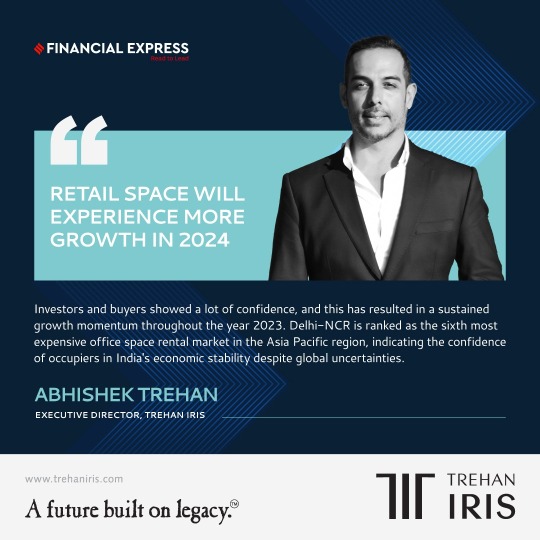
Mr. Abhishek Trehan, Executive Director of Trehan Iris, reflects on a year of sustained growth in 2023. His insights in Financial Express shed light on Delhi-NCR's position as the sixth most expensive office space rental market in the Asia Pacific, showcasing investor confidence in India's economic resilience. 🌐💼
Read the full feature here: https://shorturl.at/hjsyV
#TrehanIris #RealEstate #Retail #DelhiNCR #RetailRevolution #RetailIn2024 #EconomicStability #FinancialExpress
#Mr. Abhishek Trehan#Executive Director of Trehan Iris#reflects on a year of sustained growth in 2023.#TrehanIris#RealEstate#Retail#DelhiNCR#RetailRevolution#RetailIn2024#EconomicStability#FinancialExpress#trehanirisfamily#irisbroadwaynoida#premiumcommercialproperty#trehanirisbroadway#irisbroadway
2 notes
·
View notes
Text
I work a corporate job and I have to admit sometimes I love the way it makes me feel like a big girl, lol. Sometimes I’ll send an important email or finish a big project and I’ll just be like “I'm going to get a good grade in working, something that is both normal to want and possible to achieve.”
#this is by far the best job I've ever had especially since I get to work from home#if you're reading this and you're stuck in retail or something: get into accounting#even if you suck at math like me it's a sustainable job and pretty easy lol#personal
24 notes
·
View notes
Photo

@know_name_store 🖤🤍 ft. Darcy . . . . . . . . . . #archi #architecture #archilovers #interiordesign #interiors #interior #interiordesigner #architect #sustainability #sustainable #sustainableliving #bookstagram #books #bookshelf #shop #retail #photography #dog #dogsofinstagram #dogs #dogsofaustralia #giftideas #giftguide #shoplocal #shopping #perthisok #potd #urban #streetphotography #streetstyle (at Know Name) https://www.instagram.com/p/CmrCSHKvVeJ/?igshid=NGJjMDIxMWI=
#archi#architecture#archilovers#interiordesign#interiors#interior#interiordesigner#architect#sustainability#sustainable#sustainableliving#bookstagram#books#bookshelf#shop#retail#photography#dog#dogsofinstagram#dogs#dogsofaustralia#giftideas#giftguide#shoplocal#shopping#perthisok#potd#urban#streetphotography#streetstyle
3 notes
·
View notes
Text
I think I set up a kofi like 500 years ago and never used it for anything but now I have no idea what email I used lmfao
#i tried my main/business email from hs but no dice#maybe i'll just make a new one#or i might not even end up using kofi at all#but im thinking i might start putting more original writing online & monetizing it#bc i would like an income! and going back to retail would not be sustainable for me rn#idk. need to look more into it.and finish all the organizing/admin tasks ive been meaning to do on tumblr#scout talks
1 note
·
View note
Text
The Health Benefits of Eating in Kansa Thali | Hi Retails

Ever wondered why your grandma always swore by metal utensils like bronze for cooking and eating? It’s more than just tradition—it’s a wellness hack that modern science is catching up with! In a world increasingly focused on quick fixes and artificial solutions, the Kansa thali stands as a testament to the enduring wisdom of ancient traditions. This handcrafted bronze plate, steeped in Ayurvedic principles, offers a holistic approach to health and wellness that transcends modern-day challenges. Let’s delve into the transformative power of the Kansa thali and discover how it can elevate your dining experience while nourishing your body and mind.
The Kansa Thali: A Holistic Approach to Health
A Kansa thali, crafted from a unique alloy of copper and tin, is more than just a dining utensil. It’s a powerful tool for promoting holistic health and well-being. Rooted in Ayurvedic principles, the Kansa thali offers a range of benefits that can enhance your overall quality of life.
Digestive Harmony: The natural properties of Kansa help balance the pH of food, promoting optimal digestion and preventing digestive discomfort.
Immune System Boost: By neutralizing acidity and reducing toxins, the Kansa thali helps strengthen your immune system, making you less susceptible to illness.
Detoxification: The antimicrobial properties of Kansa can help remove harmful toxins from your body, promoting a healthier and more vibrant you.
Balanced pH: The Kansa thali can help maintain a balanced pH in your body, which is essential for optimal health and well-being.
Beyond Health Benefits: A Cultural Heritage
The Kansa thali is not only a health tool but also a cultural artifact with deep-rooted traditions. It’s often used in religious ceremonies and passed down through generations as a family heirloom. By using a Kansa thali, you’re connecting with ancient wisdom and honoring a rich cultural heritage.
Elevate Your Dining Experience
Aesthetic Appeal: The Kansa thali’s timeless elegance and natural beauty can elevate your dining experience.
Sustainable Choice: By choosing a Kansa thali, you’re opting for a durable, eco-friendly alternative to disposable plates and utensils.
Holistic Wellness: Incorporating a Kansa thali into your daily life can promote a more holistic approach to health and wellness.
Caring for Your Kansa Thali
Regular Cleaning: Wash with mild soap and water after each use.
Avoid Harsh Chemicals: Avoid using abrasive cleaners or scouring pads.
Polish Occasionally: For a natural shine, polish your Kansa thali with tamarind or lemon.
Where to Buy Authentic Kansa Thali
Looking for premium, handcrafted Kansa thalis? At Hi Retails http://www.hiretails.com, we offer the finest selection of Kansa dinnerware that’s perfect for both everyday use and special occasions. Our thalis are carefully crafted by skilled artisans, blending tradition with modern aesthetics. Visit our site at Hi Retails to browse our range of Kansa utensils, including thalis, bowls, brass Products, Gods Idols, and more.
Conclusion
The Kansa thali is more than just a dining utensil; it’s a powerful tool for promoting holistic health and well-being. By incorporating a Kansa thali into your daily life, you’re not only improving your health but also connecting with ancient wisdom and contributing to a more sustainable future.
#Kansa thali#health benefits#Ayurvedic#bronze plate#digestion#acidity#detox#immunity#sustainable living#eco-friendly#traditional#handcrafted#HI Retails#copper#tin#healing metal#ancient Indian#wellness#Ayurvedic medicine#holistic health#natural remedies#eco-conscious#sustainability#family heirloom#dining experience#healthy lifestyle#wellness trends#natural materials#traditional practices#cultural significance
0 notes
Text
#AI#ArtificialIntelligence#Footwear#SmartShoes#Innovation#Technology#FashionTech#WearableTech#MarketResearch#Sustainability#Retail#Ecommerce#ConsumerTrends#SmartProducts#HealthTech#Trends2023
0 notes
Text
Sustainable Fashion Might Not be Sustained
Hello y'all!
In the previous post we talked about the Steve Madden and Trashie partnership, which revealed a nuanced view of sustainability’s impact on fashion, particularly in the e-commerce space.
On Sept. 12, Vogue published an article talking about the financial impact of integrating sustainability in fashion, with insights from brands like Mara Hoffman and KitX.
And both cases show how challenging it is for brands to maintain ecological responsibility while navigating the economic realities in the fashion industry.
In Steve Madden’s case, the partnership with Trashie employed a circular economy model where consumers could recycle old apparel in exchange for store credits, reflecting the growing sustainability trend in the fashion industry. However, the success of such initiatives is often limited to large brands with substantial resources, which Steve Madden is. So it can afford to offer credit to consumers and drive sales while also addressing waste reduction.
However, Mara Hoffman and Kit X’s experience reveals the difficulties that smaller, independent brands face when scaling sustainable fashion. Hoffman, known for pioneering sustainable practices, ultimately had to close her label due to a financial strain on operations. Sustainable materials, ethical labor, and environmentally responsible supply chains dramatically raised production costs and priced brands like her’s out of the market. So despite consumer demand for sustainability, fast fashion continues to dominate, offering cheaper alternatives and making it harder for sustainably focused brands to compete.
The intersection of sustainability and e-commerce has its fair share of opportunities and challenges. While e-commerce does allow brands to reach global audiences and integrate recycling, transparency in supply chains, and ethical sourcing into the online shopping experience, independent labels like Mara Hoffman are finding it difficult to maintain profitability on their eco-conscious models more than global brands, like Steve Madden, which can leverage customer loyalty to promote sustainability initiatives in e-commerce.
So I think that although sustainability in fashion is in demand, its economic viability remains uneven for the industry.
What do you guys think? Let me know in the comments!
Until next time,
Cheers!
http://newhouse.syr.edu
#fashion#entreprenuership#e commerce#enviromentalism#sustainability#retail#mara hoffman#Kit X#finance#economics
0 notes